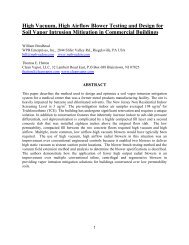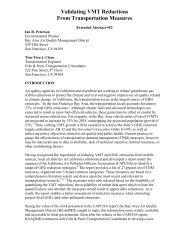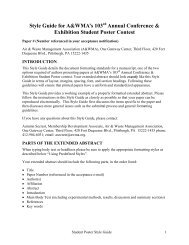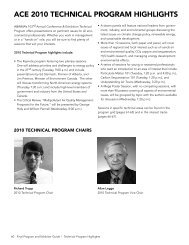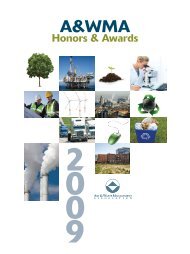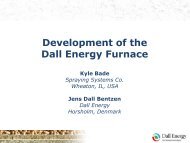Abstract Book
Abstract Book
Abstract Book
You also want an ePaper? Increase the reach of your titles
YUMPU automatically turns print PDFs into web optimized ePapers that Google loves.
successful application of CASA’s consensus decision-making process to develop air<br />
quality policies in Alberta. Finally, this paper will explore the relative success of these<br />
projects and argue three common factors help explain why some succeeded while others<br />
struggled. These factors are important considerations to any organization or stakeholder<br />
considering consensus decision-making processes for air quality issues.<br />
Keywords: consensus decision-making, air quality, policy, stakeholder<br />
Restoring Our Relationship With Earth (72)<br />
S. Gorg; EDN, Saint Paul, MN<br />
This presentation will investigate the necessary transition towards a harmonious existence<br />
with our natural environment. To re-establish this harmony, we will discuss the<br />
implementation of ecologically based standards as we move from a human view to an<br />
ecological view of the world where each transaction inherently restores the water, air,<br />
soil, and habitats to health and indefinite sustainability.<br />
Sustainability Of Wetlands Resources Based On LIDAR Mapping (215)<br />
K. Krenz, R. Gordon; AECOM Technology Group Inc., Houston, TX<br />
Advanced GIS processing of high resolution topography data was used to assess wetland<br />
hydrology and sustainability on 3,000 acres within floodplain of Trinity River, Texas.<br />
Rapid forested wetland hydrology assessment to plan for environmental sustainability is<br />
difficult using conventional methods. High resolution topography datasets, such as Light<br />
Detection and Ranging (LiDAR), offer a unique view of the topography and hydrology<br />
beneath the forest canopy and can assist with planning for and sustaining environmental<br />
functions of these natural resources. Preservation of these resources and inclusion into the<br />
U.S. National Wildlife Refuge System was a sustainability objective dependent on the<br />
nature and function as well as hydrology of these forested areas.<br />
High resolution LiDAR topography data was collected between watersheds of the Trinity<br />
River, Cedar Bayou, Luce Bayou, and Lake Houston. This topography data was<br />
processed using the ‘fill sinks’ grid processing tool inside the ArcHydro extension for<br />
ArcGIS version 9.3. The ‘fill sinks’ function analyzes an elevation grid and identifies<br />
depressions or sinks where water collects representative of wetland hydrology, wet soils,<br />
and wetland ecosystems. The ‘fill sinks’ function determines the extent of these sinks<br />
resources and flow of water patterns. Areas showing as large depressions are pervasive<br />
wetlands, dense concentrations of sinks represent dispersed mosaic wetland.<br />
Field investigations of wetlands were based on LiDAR data. The methodology used<br />
represented correlation of wetlands resources to small-scale hydrological variations<br />
identified. The analysis proved to identify predominant wetland features related to<br />
hydrologic connections and mosaic wetlands eligible for preservation as a national<br />
resource.<br />
34




